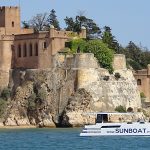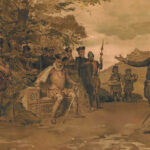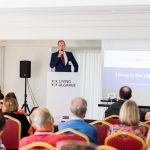By David Thomas
Understanding Risk
In order to prevent rural fires, it is essential to understand how weather can determine the level of risk, which we publish in the form of the IMPA Rural Risk chart on our Facebook page each day. Knowing when the winds are high, relative humidity is low and temperatures have increased may seem obvious, but not so obvious is what the FWI means.
The FWI (Fire Risk Index) determines how quickly a fire will start and spread. The FWI comprises six indices that quantify the effects of fuel moisture and wind on fire behaviour. The increase in each of these components corresponds to an increased fire hazard. Given the windy conditions recently, I highlight the following two:
FFMC (Fine Fuel Moisture Index) – represents the moisture content of dead thin, fast-drying fuels, providing a good indicator of their degree of flammability.
ISI (Initial Propagation Index) – results from the combination of the FFMC and the intensity of the wind, representing the initial rate of fire propagation, without including the influence of varying amounts of fuel.
Others include the DMC (Humus Index), DC (Drought Index) and BUI (Available Fuel Index).
On 12 July 2021, around 70% of mainland Portugal was at very high risk, e.g. 50.1 and above. Most of the Algarve was at 64 and over (dark brown), which is at the extreme level as seen from the map. This day was the highest risk level so far this year but will likely be repeated and intensify as we move further into the summer season. At the start of the Monchique fire in 2018, the FWI in the area was above 64, which is the extreme level. Since 2001, all fires in the Algarve consuming over 5000 hectares started when the FWI was above 68. This is why the FWI is so important.
SELF-CREATED RISKS
Another area of risk is those we create ourselves and by this, I mean how our activities can determine the risk level. For example, if we go hiking or camping in the countryside or use a BBQ without taking the proper precautions, the risk obviously increases. Whereas we have little control over the FWI, we do have full control over our activities so this is why risk awareness and prevention is important.
Safe Communities Portugal recently spoke to the Head of AGIF; he stated that vegetation has grown with a wet winter in some parts of the country but is now becoming much drier due to lack of rainfall. This vegetation provides the fuel for fires, allowing them to start more easily and burn with greater intensity.
It is therefore important to understand the risk and take the steps to prevent a fire from starting in the first place.
In the event of a major fire, it is also important to realise that it may take some time for the firefighters to reach you if living in a remote area or your property is difficult to find, hence to be aware of self-protection measures.
Recently the President of the ANEPC stated: “Resources do not allow for a firefighter to be ‘placed behind every tree’ to deal with fires – the aim should be to prevent fires starting in the first place.”
Safe Communities Portugal’s role in this as an official Civil Protection Volunteer Organisation is to communicate prevention and self-protection measures through close liaison with the government. Please, therefore, study the information on our new website under the section Rural Fire Prevention and Protection, especially the
page During Fires. The latter provides essential information such as developing an action plan, communications, deciding whether to stay or leave your property in the event of a fire, being surrounded by a fire, action if a fire is approaching your property, what to do if trapped inside, evacuation and evacuation kits and dealing with smoke effects.
David Thomas is President of Communities Portugal













